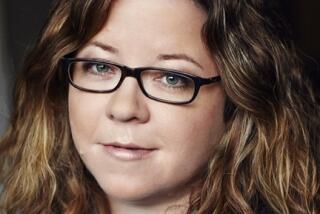I remember thinking that death had no business coming to one so young on a morning so vibrant with life. : On an Autumn Morning
The image remains fixed in my mind: a young man sprawled on his back by the side of the road on Topanga Canyon Boulevard, arms flung outward, eyes closed, his face gray and crimson-streaked, as though a makeup artist had applied these tones in a cinematic duplication of death.
But this was no movie and there was no makeup and the stillness that lay by the roadside was death in reality, final and unforgiving.
I came upon the scene moments after the man, flying down the canyon on a motorcycle, had lost control on a curve and gone head-on into an oncoming truck that batted him aside like a stuffed toy and bent his sports bike into a U shape.
There was no doubt in my mind as I slowed to offer help that the motorcyclist was dead, because I have seen that pallor often enough during 30 years of newspapering to recognize it and to understand its meaning.
But I couldn’t just drive by without at least some acknowledgement that a human life had ended. I stopped despite my foreboding.
Half a dozen others already stood awkwardly around the young man’s body, like attendants at a funeral.
One of them, a woman, looked up as I approached and said paramedics had been called, and then she shook her head slowly as if to say it didn’t matter anyhow, the boy was beyond paramedics.
Memories of sadness are often laced with contrast.
I recall, for instance that the day was bright with an autumn sun, and the leaves of the liquid amber trees glowed in brilliant shades of red and yellow, trimming with painful iridescence a scene of somber grays.
I remember thinking that death had no business coming to one so young on a morning so vibrant with life.
I didn’t write anything about the incident, though it continued to occupy a shadowy corner of my mind.
But I did begin gathering newspaper clippings of traffic fatalities that involved motorcycles. They formed a kind of silent litany of grief in an envelope on my desk.
A speeding motorcyclist died when he failed to negotiate a curve . . . .
A man was killed when his motorcycle slammed head-on into a pickup . . . . A motorcyclist was fatally injured when he tried to ride between a truck and a bus . . . .
A man died after his speeding motorcycle struck a van . . . .
A man died when he rode his motorcycle at high speed into the back of a truck . . . .
Then an incident occurred so like the one I had witnessed that it was as though the scene were being replayed in a pattern doomed to repeat itself as long as the young seek speed.
A motorcyclist died on Topanga Canyon Boulevard when he swerved out of his lane and went head-on into a van in almost the same area where death took the young man of my own nightmares.
Was there a pattern here? Had I been noticing more motorcycle fatalities only because of the one seared into memory, or were there actually more occurring?
Both.
True, I can’t get that image of death by a roadside out of my mind. But it is also true that statewide the number of motorcyclists killed on the highways has doubled in the past 10 years.
I asked a highway patrolman what was happening.
“Simple,” said Officer Craig Klein of the Malibu station. “Motorcycles are getting faster and there are more of them on the road.
“Some can do 150 miles an hour. They go from zero to 100 in the blink of an eye. The machine is outdoing the capabilities of its riders.”
Topanga Canyon, he said, is a special problem. Sports cyclists use the twisting, two-lane boulevard as a race track, revving up to speeds far exceeding a level of sanity required for driving anything on the 12-mile stretch between Woodland Hills and the ocean.
“They try passing on the wrong side of the road and end up as statistics,” Klein said. “Last year there were three motorcycle accidents within a few days that all involved head-on collisions. Two of them were fatal.
“When these 500-pound machines are operated by someone who doesn’t know what he’s doing, they become unguided missiles.”
I’ve never liked motorcycles. The vulnerability of bikers in mixed traffic is beyond acceptable risk. What otherwise would constitute minor injuries become fatalities in the simplest collisions between bike and car or bike and almost anything else.
It’s a lousy way to die.
I have argued ad nauseam with those who tell me I don’t understand the freedom of wind in my face and roaring horsepower between my legs, and maybe they’re right. They say I have outlived a quest for speed, and maybe they’re right there too.
But therein lies an irony, that these machines of rush and power are primarily playthings of the young, and the young are least emotionally equipped to handle their deadly potential.
Testaments to the risks youth is willing to take for the sake of its own incandescence exist daily, but nothing is worth that autumn scene by the roadside, where a boy lay dead of his own raging quest to get there a microsecond sooner.
More to Read
Sign up for Essential California
The most important California stories and recommendations in your inbox every morning.
You may occasionally receive promotional content from the Los Angeles Times.










